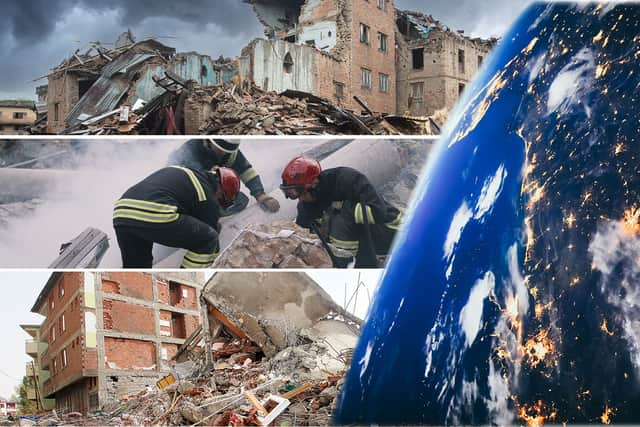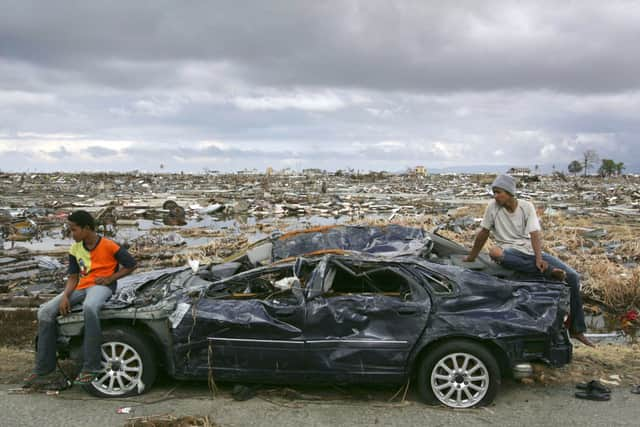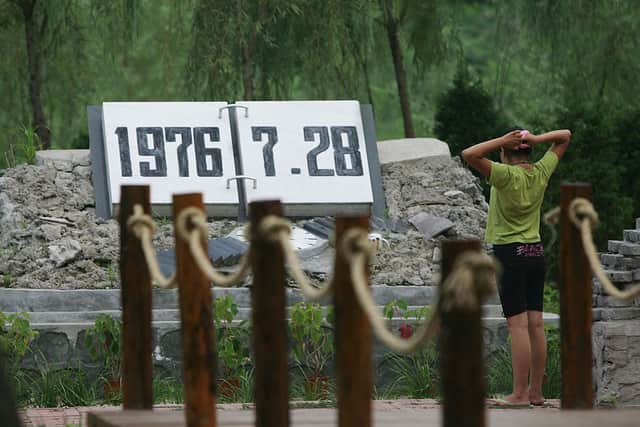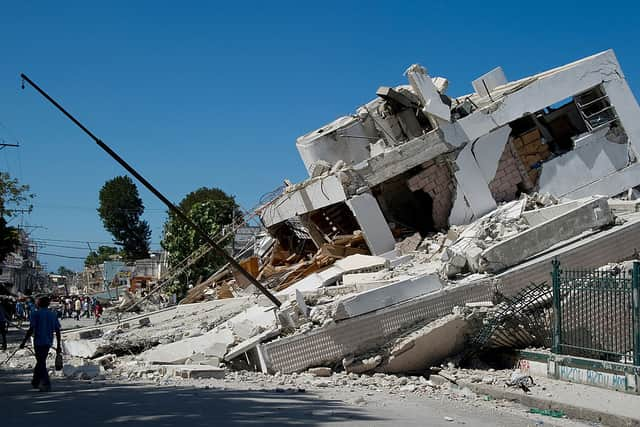What’s the deadliest earthquake in history? Worst quakes on record, affected countries, magnitude, death tolls
and live on Freeview channel 276
A 7.8-magnitude earthquake hit Turkey and Syria on Monday (6 February) making it likely to be one of the deadliest this decade, according to seismologists.
The US Geological Survey said it was the largest quake recorded worldwide since a tremor was reported in the south Atlantic in August 2021. Since 1900, China, Indonesia, Haiti and Japan have been hit by the five deadliest earthquakes - with the quakes combined killing over one million people.
Advertisement
Hide AdAdvertisement
Hide AdThe deadliest earthquake hit the Indian Ocean in 2004 and brought damage and devastation to 12 countries. The powerful undersea earthquake struck off the coast of Indonedia’s Sumatra island on Boxing Day with the quake causing the ocean floor to rise by as much as 40 metres. Tsunami waves pounded into the coastlines of nearby countries, killing in total nearly 230,000 people and making it one of the deadliest disasters in modern history.
Here we run through the five worst earthquakes on record since 1900 - what happened, the number of lives lost and the magnitude.


1. Indian Ocean 2004
Magnitude: 9.1
Death toll: 226,408
The Boxing Day tsunami of 2004 hit the coasts of several countries in South and Southeast Asia in December. The tsunami and its aftermath were responsible for immense destruction and loss on the rim of the Indian Ocean.


An undersea earthquake with a magnitude of 9.1 struck off the coast of the Indonesian island of Sumatra. Over the next seven hours, a series of immense ocean waves triggered by the quake reached out across the Indian Ocean. Overall 12 countries were affected, these were:
- Bangladesh
- Indonesia
- India
- Kenya
- Sri Lanka
- Maldives
- Myanmar
- Malaysia
- Somalia
- Seychelles
- Thailand
- Tanzania
Advertisement
Hide AdAdvertisement
Hide AdThe earthquake killed over 225,000 people across these countries sustaining massive damage.
Loading....
2. China 1920
Magnitude: 8.5
Death toll: 180,000
The 1920 Haiyuan earthquake was one of the most fatal earthquakes in China, and was one of the worst disasters in China by death toll. It occurred on 16 December and was a ground movement earthquake followed by a series of aftershocks for three years.
Over 73,000 people were killed in Haiyuan County, a landslide buried the village of Sujiahe in Xiji County, and more than 30,000 people were killed in Guyuan County. Nearly all the houses collapsed in the cities of Longde and Huining, and damage occurred in several provinces, regions and major cities. There were over 50,000 landslides in the epicentral area, ground cracking was widespread, and some rivers were either dammed or changed course.
Loading....
3. Japan 1923
Magnitude: 7.9
Death toll: 143,000
The Tokyo-Yokohama earthquake of 1923, also called Great Kanto earthquake, struck the Tokyo-Yokohama metropolitan area on 1 September. The death toll from the quake was estimated to have exceeded 140,000.
Advertisement
Hide AdAdvertisement
Hide AdThe shock generated a tsunami that reached a height of 39.5 feet (12 metres) at Atami on Sagami Gulf, where it destroyed 155 houses and killed 60 people. After the earthquake mass hysteria broke out as food and medical supplies were quickly used up and nine million people were without drinking water.
Lawlessness and the civilian authorities’ inability to deal with the disaster drove the government to declare martial law and an eventual military takeover. It started a national effort to rebuild Tokyo into a world-class city but this also whipped up nationalist hysteria.
Vigilante bands, including Japanese military and police, roved the countryside murdering thousands of Koreans. It is known as the Kantō Massacre - the mass murder of the Korean residents of the Kantō region, as well as socialists, communists, anarchists, and other dissidents, in the immediate aftermath of the earthquake.
The massacre occurred over a period of three weeks and during this time an estimated 6,000 ethnic Koreans and Japanese socialists were killed. The massacre was denied by Japanese authorities almost immediately after it occurred and it is still denied by Japanese right-wing groups today.


4. China 1976
Magnitude: 7.8
Death toll: 242,000
Advertisement
Hide AdAdvertisement
Hide AdThe Tangshan earthquake of 1976, also called Great Tangshan Earthquake, hit the Chinese coal-mining and industrial city of Tangshan, east of Beijing on 28 July. The area of northern China hit by the Tangshan earthquake is particularly prone to the westward movement of the Pacific plate.
Around 700,000 people were injured, and property damage was extensive, reaching as far as Beijing. Most of the fatalities resulted from the collapse of unreinforced masonry homes where people were sleeping.
The Chinese government was ill-prepared for a disaster of this scale but boasted self-sufficiency and refused all offers of foreign relief aid. In the crucial first week after the crisis, many died from lack of medical care. Tangshan was eventually rebuilt with adequate earthquake precautions and today nearly two million people live there.


5. Haiti 2010
Magnitude: 7.0
Death toll: 222,570
The 2010 Haiti earthquake occurred on 12 January, 2010, on the Caribbean island of Hispaniola, comprising the countries of Haiti and the Dominican Republic. Haiti was most severely affected, occupying the western third of the island.
Advertisement
Hide AdAdvertisement
Hide AdThe quake hit some 15 miles southwest of the Haitian capital of Port-au-Prince with the initial shock registering a magnitude of 7.0, soon followed by two aftershocks of magnitudes 5.9 and 5.5. Port-au-Prince was ill-equipped to deal with the disaster after it was already recovering from two tropical storms and hurricanes which hit between August and September in 2008.
A failure of the electric power system in the aftermath of the quake hampered efforts by citizens and international aid organisations to provide medical assistance, food, and water to survivors. Further deaths occurred as serious injuries went untreated due to the absence of medical staff and supplies.
The earthquake was generated by a deformation along the Léogâne fault discovered underneath the city of Léogâne. The Léogâne fault descends northward at an oblique angle away from the EPG fault system, and many geologists say the earthquake resulted from the slippage of rock upward across its plane of fracture.
The shocks were felt throughout Haiti and the Dominican Republic as well as in parts of nearby Cuba, Jamaica, and Puerto Rico.
Comment Guidelines
National World encourages reader discussion on our stories. User feedback, insights and back-and-forth exchanges add a rich layer of context to reporting. Please review our Community Guidelines before commenting.